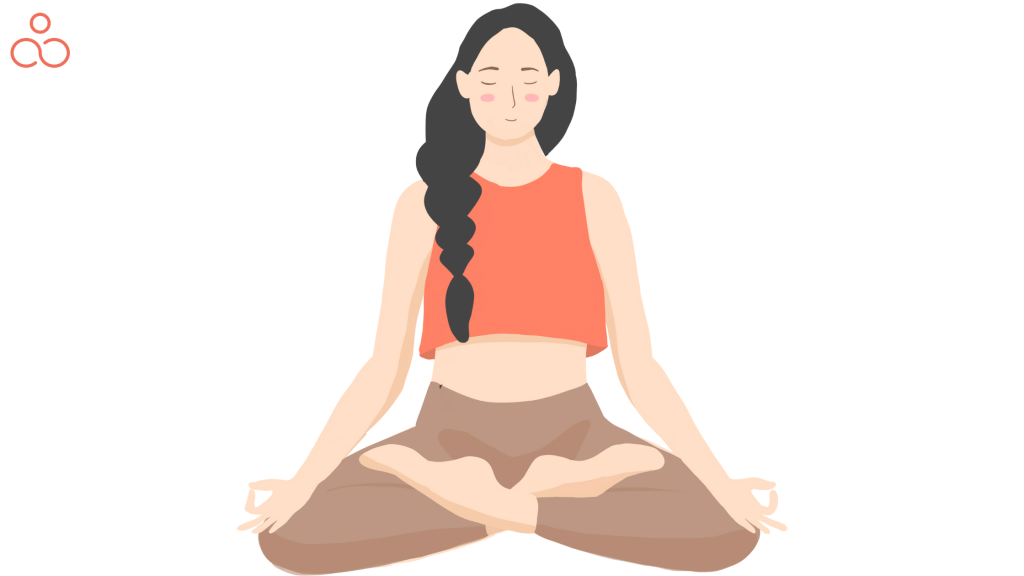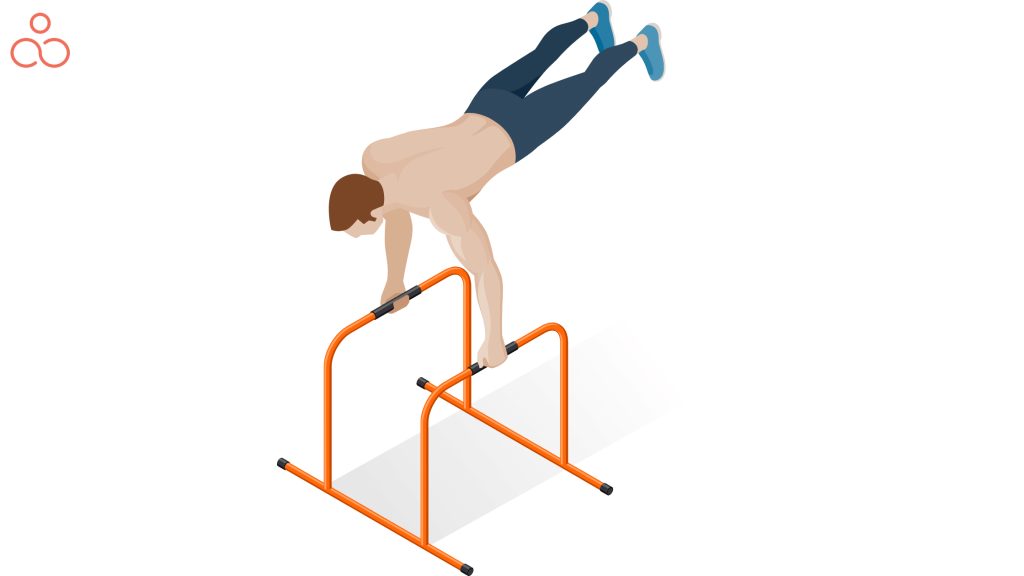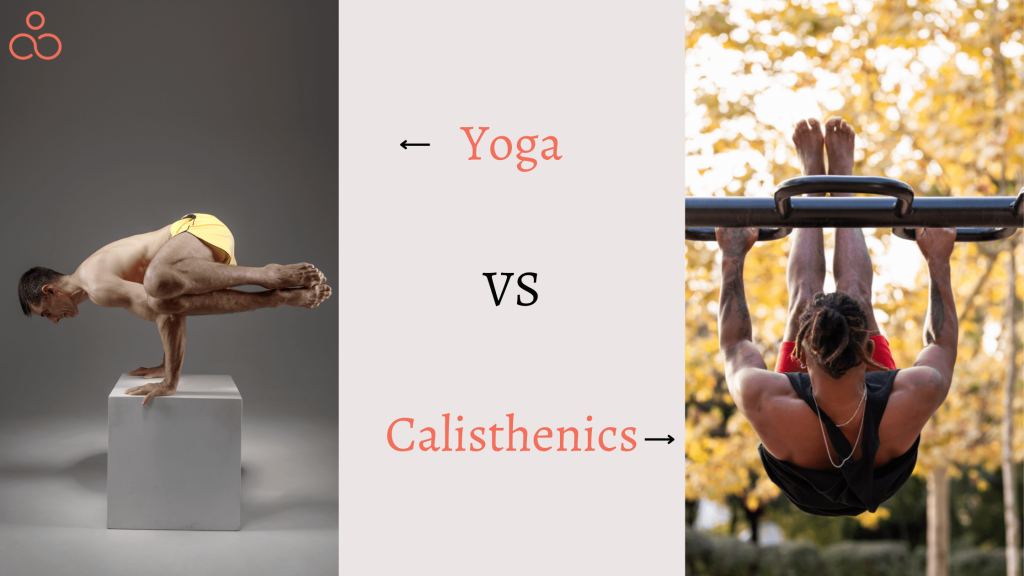Basic calisthenics and yoga are two of the most popular types of bodyweight exercises. Anywhere, at any time, you can get an excellent workout using only your body weight. But which is the right fit for you and your objectives – Yoga vs. Calisthenics? Both test your body’s strength, endurance, and mobility, and if you continue with them, you’ll notice a significant improvement in general fitness and physique. The most significant distinction is that calisthenics is primarily endurance and conditioning training, to increase the difficulty and/or amount of repetitions of motions such as pull-ups and push-ups. Yoga comes in a variety of styles: some emphasize strength, while others emphasize mobility and flexibility, yet others emphasize breath practice and meditation.
What is Yoga?

Yoga is a kind of exercise that has been practiced for thousands of years. This practice, which originated in India, incorporates a variety of postures and movement patterns to help you improve flexibility and strength. You may receive a highly intensive cardio or strength exercise, or a more restorative experience, depending on the sort of class you join.
The following are some of the most prominent yoga styles:
- Vinyasa Flow
- Hatha Yoga
- Restorative Yoga
- Power Yoga
- Ashtanga Yoga
Vinyasa Flow: Vinyasa flow yoga is one of the various types of contemporary yoga that entails performing a series of postures or asanas in a smooth and unbroken sequence. It gets its name from the way you transition from one position to the next smoothly and gently.
Vinyasa yoga is characterized by continuous breathing and body movement. When doing this sort of yoga, you must change postures a bit faster than you would in other types of yoga. You must also match your breath to each action. Vinyasa is a great blend of strength training, meditation, cardio, and stretching since it combines breath and body movement.
Here are some of the basic poses involved in vinyasa flow yoga:
- Downward dog pose (adho mukha svanasana)
- Mountain pose (tadasana)
- Plank pose (kumbhakasana)
Hatha Yoga: Hatha Yoga is based on a thorough study of the body’s mechanics, and it employs yogic postures, or yoga asanas, to help the system maintain higher energy dimensions. One may modify and improve their way of thinking, feeling, and experiencing life by practicing this fundamental science. The body is transformed into a stepping stone on the path to realizing your full potential.
Restorative Yoga: Restorative yoga is a relaxing practice that focuses on slowing down and extending your body passively. In a restorative yoga session, you may barely move at all, only holding a few poses for an hour. There are several restorative variants on classic yoga postures, as well as numerous options for using props such as blankets, bolsters, blocks, straps, and sandbags. We outline some of the most important restorative yoga positions in this article, which are essential to the practice of profound rest.
- Child’s Pose (Balasana) With Support
- Supported Bridge Pose (Setu Bandha Sarvangasana)
- Reclined Twist (Supta Matsyendrasana) With Support
- Supported Legs-Up-the-Wall Pose (Viparita Karani)
- Supported Corpse Pose (Savasana)
Power Yoga: Power yoga, as the name implies, focuses on increasing strength and endurance. It’s also a great way to burn calories while doing yoga. Power yoga is commonly used interchangeably with Vinyasa yoga, even though it is not a recognized kind of yoga. Power yoga is more accurately described as a kind of Vinyasa yoga, which has its origins in Ashtanga yoga, a well-established discipline that dates back to the early twentieth century. Rather than treating each position individually, power yoga focuses on the flow from one to the next. Unlike some other types of yoga, the positions aren’t separated from one another. Power yoga, whatever you call it, is a high-intensity, fast-paced workout. You switch from one to the other.
Ashtanga Yoga: “Ashta” and “Anga” are two Sanskrit words that make up the word Ashtanga. “Ashta” means “eight,” whereas “Anga” means “limb” or “body portion.” As a result, Ashtanga combines the eight limbs of yoga into a single, comprehensive discipline. These eight limbs of yoga symbolize the many areas of yoga philosophy contained in the yoga sutras, which serve as the Ashtanga Yoga School’s foundation. All eight limbs of yoga are integrated into the Ashtanga philosophy: Yama (moral norms), Niyama (self-discipline), Asana (posture), Pranayama (breath control), Pratyahara (sense withdrawal), Dharana (concentration), Dhyana (meditation), and Samadhi (meditation) (oneness with the self).
Unlike calisthenics, the advantages of yoga go beyond physical fitness. Yoga is a very spiritual practice that is frequently combined with meditation in sessions. However, the spirituality of the practice varies according to the class or studio. Many yoga studios have abandoned the spiritual aspect of the practice in favor of focusing solely on the physical.
What is Calisthenics?

Push-ups, bodyweight squats, and pull-ups are all well-known exercises. While you may not recognize the term calisthenics, you are probably familiar with the movements. This training style’s exercises rely purely on your body weight and require very little equipment. These workouts, which date back to Ancient Greece, have remained popular due to their ability to increase physical performance swiftly. Militaries, for example, use severe calisthenics training programs to get recruits in shape quickly during boot camp.
Any activity that employs your body as resistance to create strength, endurance, flexibility, and balance is known as calisthenics. Calisthenics is also less damaging to your joints than weightlifting since you simply utilize your body weight. You can potentially harm yourself if you use too much weight during resistance exercise. You grow muscle according to your natural muscular system with calisthenics rather than employing excessive resistance. Lifting light weights have a lower impact on your joints, ligaments, and tendons than lifting high weights.
So, you’ve heard that including a calisthenics workout in your routine can benefit your body greatly. You’re all revved up and ready to make this your new go-to workout. The issue is that you have no idea where to begin. With so many calisthenics training routines accessible online, choosing which one to attempt first might be difficult. Many people find calisthenics exercises to be either too difficult or too easy. This may deter them from carrying on with the habit. Because calisthenics is such a versatile workout that you may do it practically anywhere and at any time, it needs a lot of self-discipline to keep working out.
Calisthenics Workout Routine for Beginners
Before You Start
As with any training plan, you must first understand the fundamentals. If you’ve done any other bodyweight exercises previously, this should be a breeze. It’s also OK if you’re beginning from the ground up. This is a no-pressure stage in which you prepare yourself for the upcoming challenge.
Starting with Month Zero
This phase will be Month 0 of the plan if you are a novice. Begin by doing these exercises at least three times each week, with one day off in between. During this period, the emphasis is on learning how to do the exercises correctly. Don’t overwork yourself by doing a lot of repetitions or sets. When it comes to bodyweight workouts, remember that quality is far more beneficial than quantity. At the end of Month 0, the aim is to be able to do at least 3-5 repetitions of each exercise correctly and consistently.
Learning the Basics
At this stage, you need to familiarize yourselves with these basic exercises:
- Push-ups
- Dips
- Squats
- Pull-ups/Chin-ups
- Hanging Leg Raises
Watch this clip to get more exercises:
Diet Plan to help
Many diet regimens promise to help you reduce weight, and body fat, and improve your overall appearance in no time. These regimens may provide varying results depending on who follows them. The good news is that adhering to a calisthenics diet is not difficult. All you have to do is remember four recommendations to get the calisthenics physique you desire. Following these guidelines may appear to be simple enough, yet adhering to them requires commitment.
- Stay away from junk food
- Consume Produce (Fruits and Vegetables)
- Consume protein-rich foods such as lean meats.
- Consume grains and dairy products
Which is better for beginners?
One of the most noticeable contrasts between the two fitness techniques is the intricacy of each. The level of play of their separate activities is another distinction. Most of the exercises in calisthenics are well-known motions with several variants throughout the sport; examples include push-ups, pull-ups, squats, and planks. Yoga postures can be rigid, like a warrior pose, or dynamic, downward dog to chaturanga flow, or laying down and stressing diaphragmatic breathing techniques. Many novices prefer to begin with calisthenics since they are already familiar with the basic motions. Many of the basic motions of calisthenics are commonly taught in school as children, and the exercises are generally simple, efficient, and easy to do at home, so utter novices may find it simpler to get started this way if they’re new to working out.
Calisthenics also aids in the development of a firm foundation for all other types of exercise. If you struggle to stay motivated while exercising, enrolling in a yoga class and performing some basic courses may be a better alternative. You’ll get personal attention and form corrections from a highly skilled instructor, as well as meet some new individuals who share your interests
Yoga vs. Calisthenics – Workout and Effectiveness
The most important factor to consider when evaluating the efficiency of these two workout methods is how hard you push yourself. For utter novices who struggle with simple bodyweight motions, both yoga and calisthenics can be adapted.
- Are you unable to perform a pushup?
- Begin with a torso-lifted pushup and work your way up
- You can’t execute a full warrior two poses?
- To improve your balance, shorten your stance and add a prop
As your strength and technique increase, both calisthenics and yoga rely on learning advanced moves. That is where progress takes place. If you’ve never tried yoga at a gym or studio, you might think of it as a simple stretching exercise but you could be wrong!
One of the most important aspects of muscle development is the length of time the muscle is under strain. Push yourself to sustain a yoga position without breaking your stance to get the most out of your yoga practices. You’ll have decent young outcomes and an athletic body. Yoga also targets two distinct regions of the neural system.
There are many various sorts of calisthenics workouts to select from, just like there are many different varieties of yoga.
You may undertake a HIIT program that includes calisthenics exercises to increase cardio and fitness, or you can do a strength-style calisthenics workout with sets going to failure and long rest periods. A HIIT calisthenics workout consists of alternating between short bursts of pushes, lunges, calisthenics, and other workouts, with only 10-30 seconds of rest between sets. In a strength calisthenics workout, you’ll do anywhere from 3 to 8 sets of a certain exercise until you reach failure. Remember that calisthenics routines focus solely on the physical aspect of fitness and will quickly enhance your strength.
FAQ’s
Can I replace yoga with calisthenics or vice versa?
Yoga and Calisthenics are two different forms of workout. The mental and emotional wellness that can be achieved through yoga is not replaceable. However, Vinyasa flow, ashtanga yoga, etc. can be replaced to some extent with calisthenics as they are intense and work on strength training.
Yoga vs. Calisthenics – Which is best for beginners?
It is difficult to decide which is best for a beginner as a lot of factors must be considered. If you are just recovering from a medical condition, it is best to go for a slow form of yoga. If you are looking for a change in your regular workout plan, then calisthenics is good to go. If you are someone who is looking to distress and also tone up your body both at the same time, then again yoga is a better choice as yoga works both on physical and mental wellness.
What is the workout effectiveness of Yoga vs. Calisthenics?
Though both Yoga and Calisthenics both work on strength training and maneuvering of the body, yoga, in particular, focuses primarily on endurance, muscle toning, and mental wellness too. Yoga also triggers the parasympathetic nervous system, which brings in a state of calmness from within. Calisthenics on the other hand is like a pumped-up effort to reach a certain target level. It works at an intense level and doesn’t have much of a grounded feel at the end.
What could be the difference in cost, equipment, and convenience between Yoga and Calisthenics?
Equipment – Both training regimes do not need any specialized equipment or instruction, but there are a few things you may do to boost your outcomes. Among the most pivotal pieces of equipment are as follows:
- Yoga mat
- Yoga blocks
- Yoga straps
- Yoga bolsters
Cost and Convenience – Taking a class (either online or in a studio or gym) and following along with an instructor is more common in yoga. It’s best to acquire perfect technique and stay motivated at a studio for beginners. Yoga studios often charge $10-$20 a session and provide courses at various times throughout the day to accommodate your schedule.
Conclusion
Yoga and calisthenics have quite a tradition of placing the emphasis only on your body mass and a minimal bit of additional equipment. Yoga may be thought of as a form of calisthenics. However, yoga is more than just calisthenics underneath the surface. Yoga is a form of exercise that also benefits your mental health. Calisthenics is a form of workout that lays emphasis only on the muscular criterion, and it is extremely efficient and effective in this regard. If you are glancing for a more fruitful type of practice, yoga will significantly improve your physical and emotional well-being. The benefit of having little equipment for many styles is that you may do it on a daily basis. So, use these exercise methods to establish a strong and functional body!

